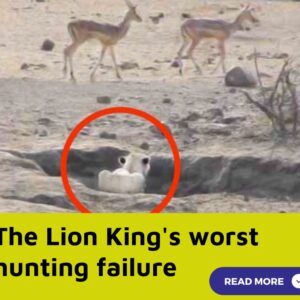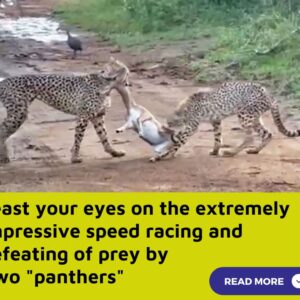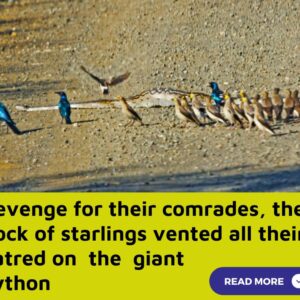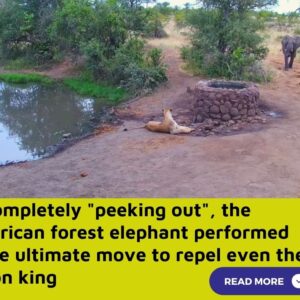There are otters in the river, and jaguars on land. It’s best for both of these powerful animals not to violate each other’s territory, otherwise the consequences will be extremely dire.
The Pantanal is one of the largest wetlands on the planet, with an area of 230,000 km2 located on the territory of all three countries: Brazil, Bolivia and Paraguay.
The word Pantanal comes from the Portuguese word “pântano”, meaning swamp, but in fact the area is a vast alluvial plain, consisting of rivers, lakes, grasslands, forests and savannas.
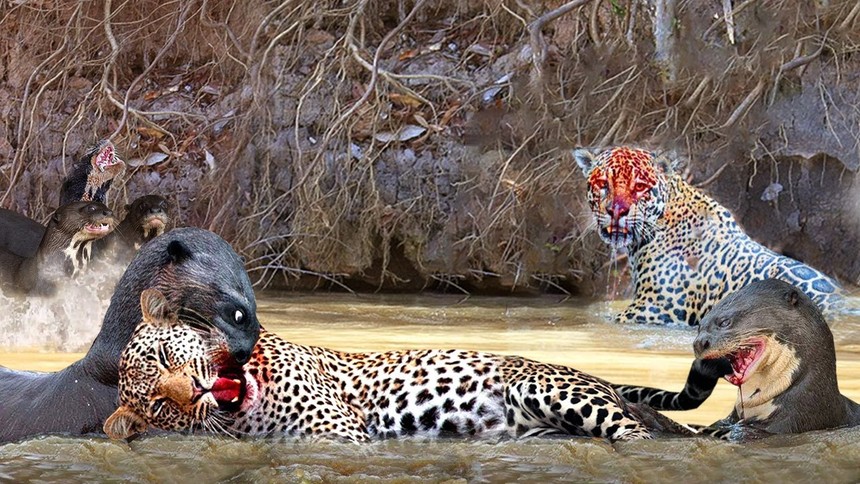
The Pantanal terrain is extremely unique not only due to the natural characteristics and regional climate, but also largely from the diversity of the region’s flora and fauna.
In the Pantanal there are about 3,500 species of plants, 650 species of birds, 80 species of mammals and 50 species of reptiles, of which there are about 20 million crocodiles alone.
It has many specially protected natural areas and a nature reserve of the same name. It is known that the Pantanal is a UNESCO World Heritage site.
The Pantanal wetlands are located in a low-lying area, surrounded by higher lands: to the east is the Serra de Maracaju mountain range, to the south is the Serra da Bodoquena, the Chaco range of Paraguay and Bolivia blocking the west and the Serra dos Parecis and São Geronimo ranges to the north.
In the largest wetland in the world, the animal that dominates its waterways is the South American giant otter (Pteronura brasiliensis). They are the oldest members of the weasel family and one of the most successful group-working animals to date.
When mature, an otter will be nearly 1.8 m long and weigh up to 35 kg; twice that of the river otter species commonly found in North America.
The giant otter swims and dives very well due to its short, webbed legs and flat tail. They can swim at a speed of 14 km/h and swim a distance of 100 m in just 30 seconds.Giant otters spend most of their time in the water because they mainly eat fish and because they need to take in a large amount of food: each giant otter eats from 2.7 kg – 4 kg of food per day. In addition to fish, their food also includes pythons, crocodiles, crustaceans and other marine creatures.
Giant otters have developed eyesight to hunt prey. In addition to their eyes, otters also use their whiskers to detect prey in the water by detecting changes in water pressure and current.
The river has otters, and the land is managed by jaguars, an assassin with extremely scary hunting skills.
Recently, a video posted on the reddit forum recorded the entire “unique” clash between two animals that govern two different realms of this area.
Accordingly, a jaguar was stealthily lurking by the riverbank and thought that the otter alone there would be an easy meal. When deciding to attack, it never dared to think that the other prey could be so tenacious and skilled in martial arts.
After a moment of surprise when attacked, the otter promptly turned the tables. Not only that, it also performs a series of “combos” of punching, kicking and biting on the attacker.
After a quick battle, the remaining members of the otter herd promptly arrived to assist it.
